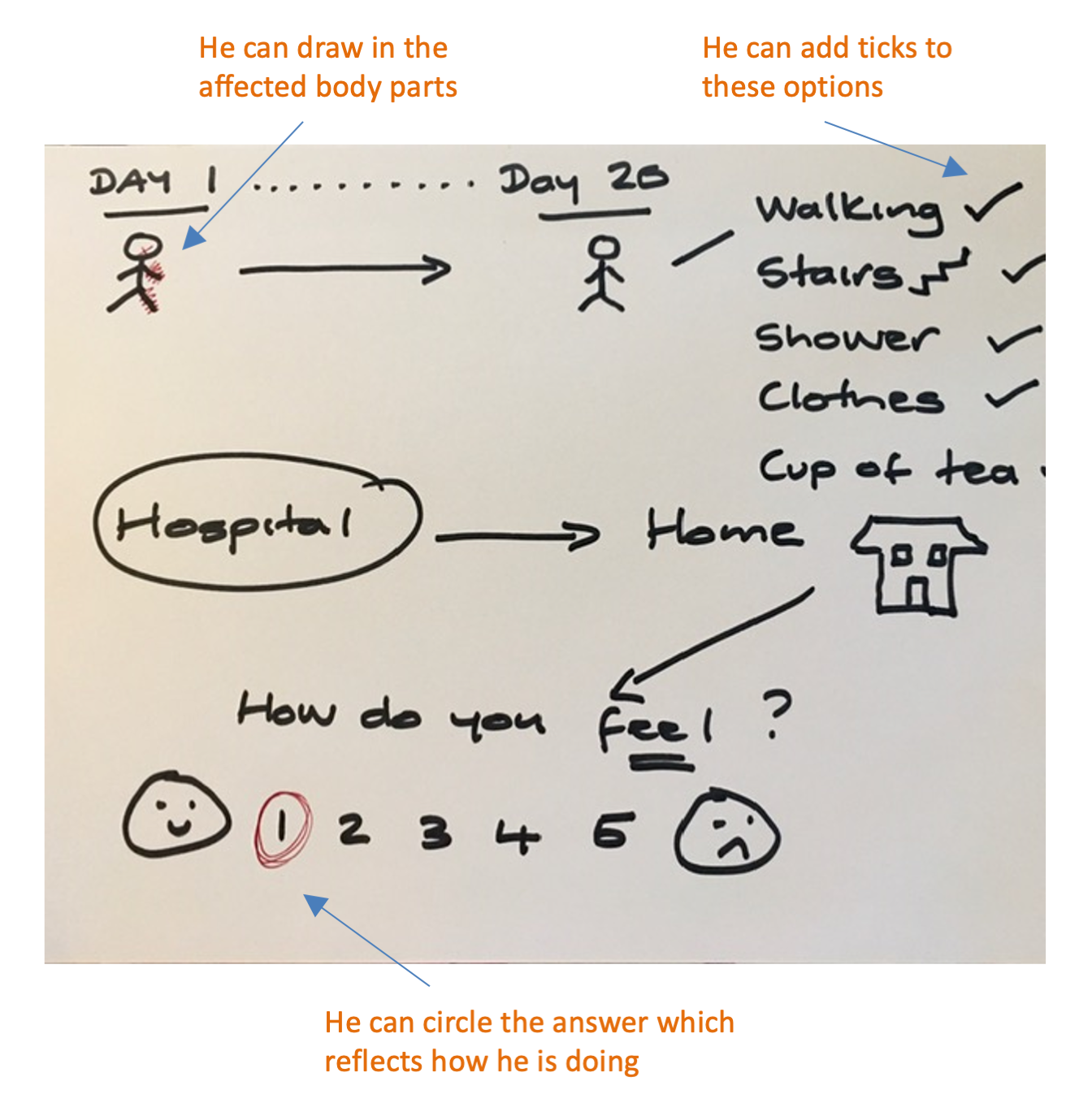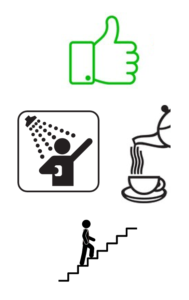The Multi-disciplinary team are keen to start discharge planning as Steven is functionally improving. The SLT and OT meet with Steven to discuss this. Visual resources can support conversation, decision making and planning. Here are 2 examples:
1. The therapist supported the conversation using simple drawings and key words which can help Steven to think about his ability with different day-to-day tasks

2. Traffic lights to highlight degree of difficulty in performing tasks



Visual exercise
Hand-drawing from healthcare professional allows for patient or carer to add to drawing in ways that help us ascertain the areas he has progressed in and those he is struggling in. (The diagram makes it clear to the patient that we are referring to the adjustment from the hospital to the home environment.)
The stick-man timeline illustrates which body parts are causing the most trouble at the start of the time period and how he is after 20 days. Affected limbs can be drawn on by the patient or carer.
A series of day-to-day self-care and other home tasks have either been ticked or left unticked, including walking, stairs, shower, clothes, and a cup of tea.
It finished by asking a simple multiple choice question about how he is feeling with a 1 to 5 scale, which can be ringed with the appropriate answer by pen.
Findings from this visual exercise
Tasks can now be pooled into three categories:
- those he is finding relatively easy
- those he experiences some difficulty with
- those he struggles to do at all
Page last reviewed: 19 Jan 2021


